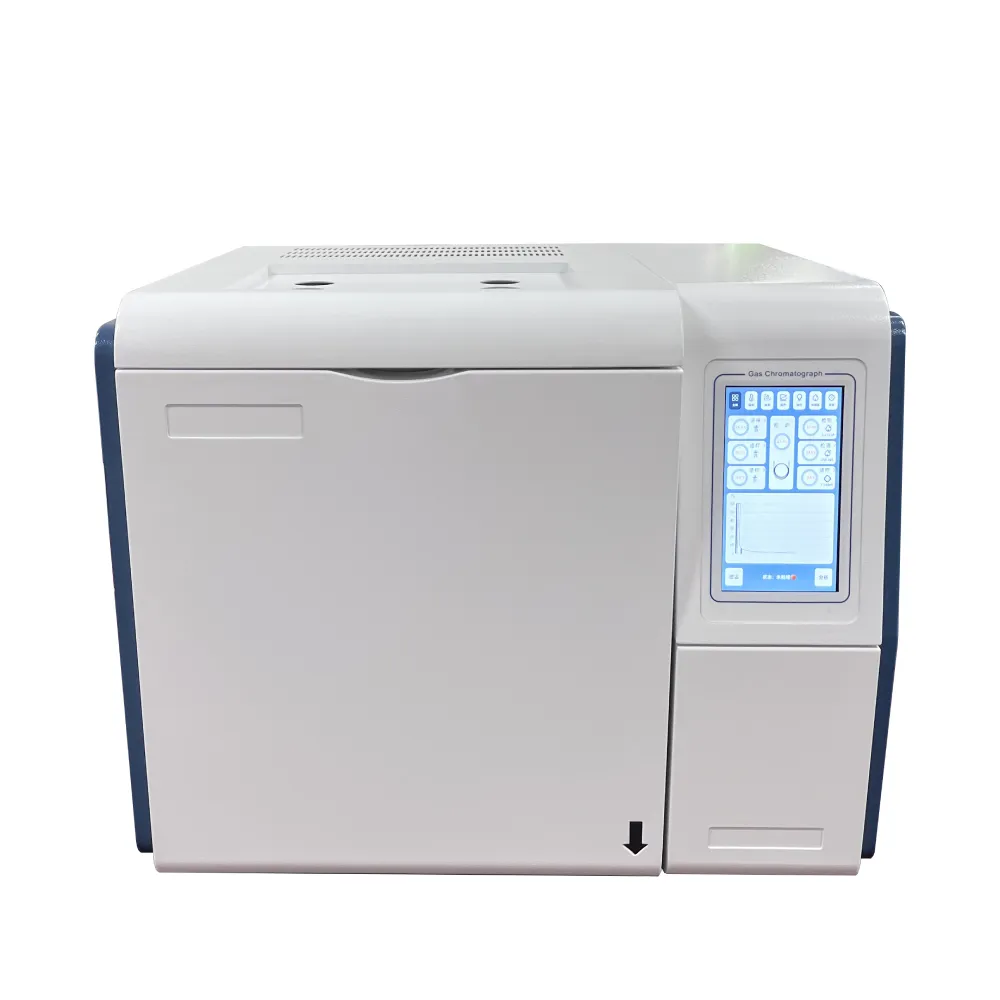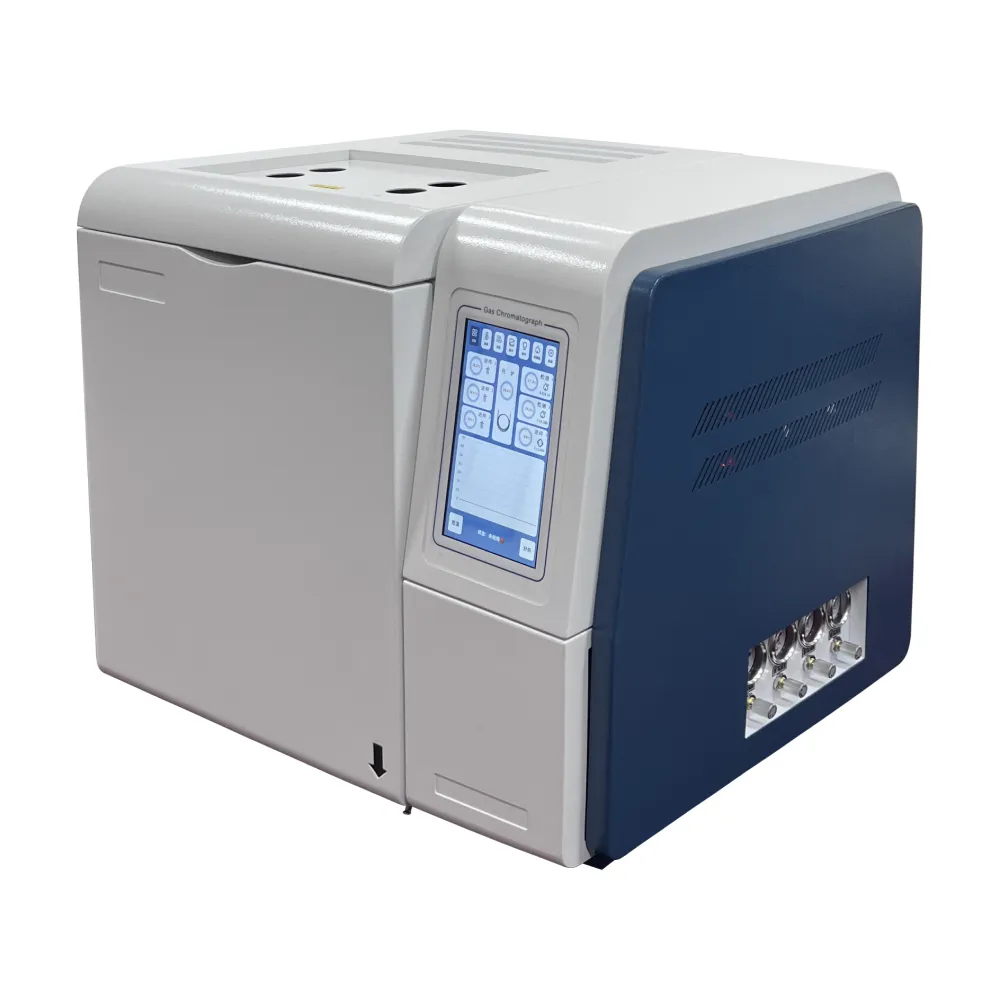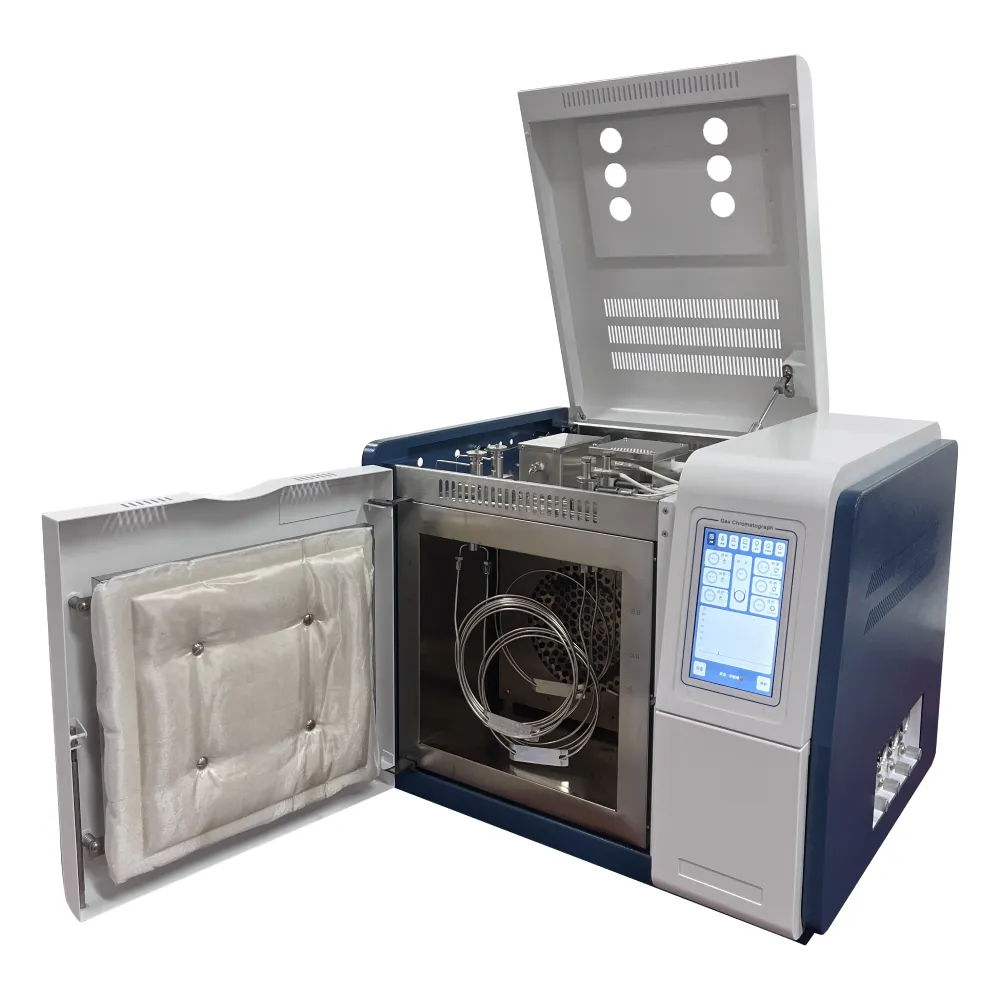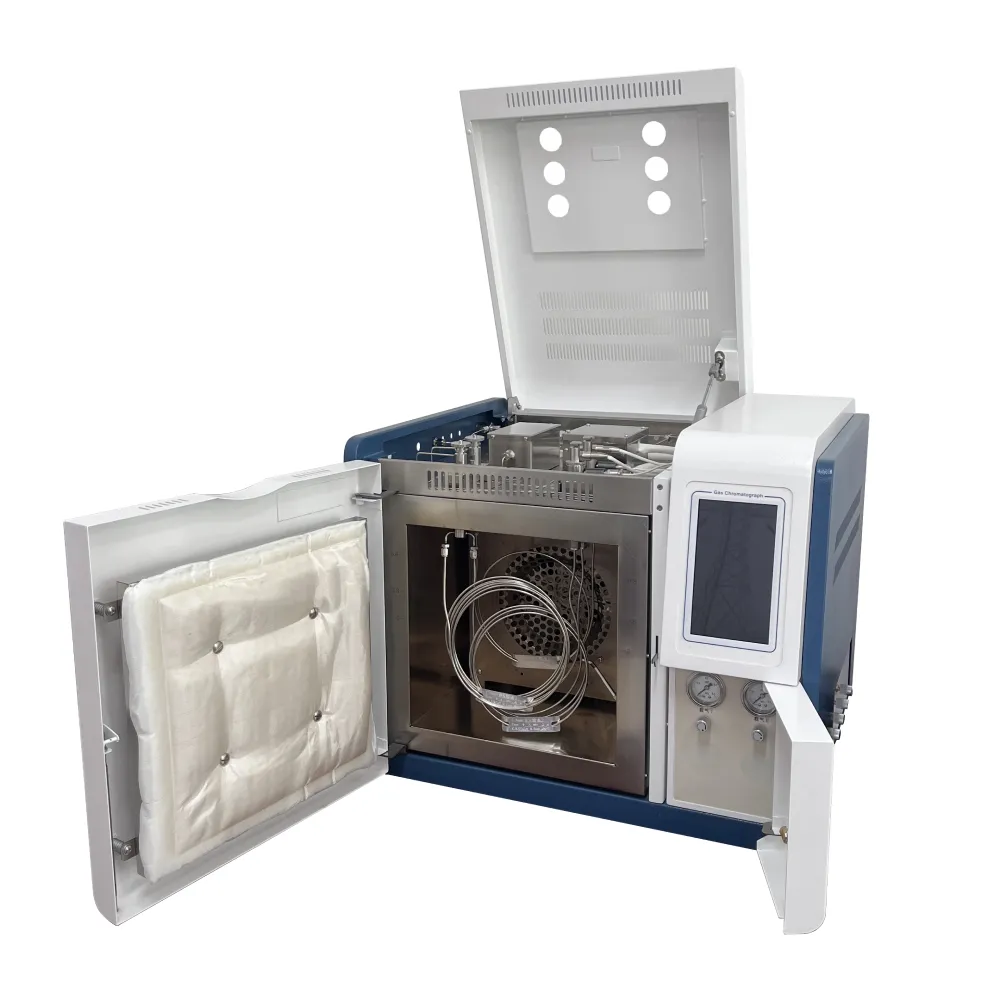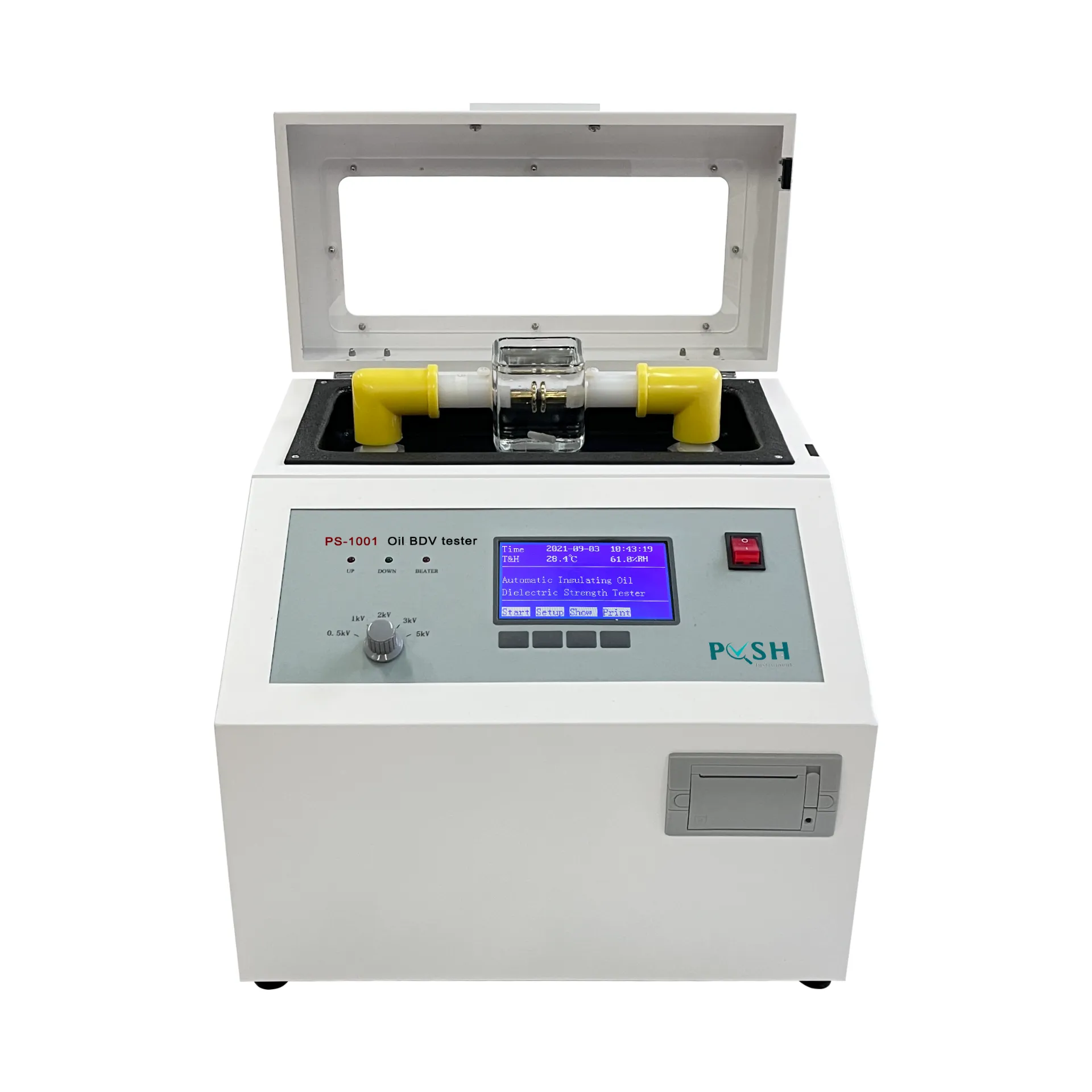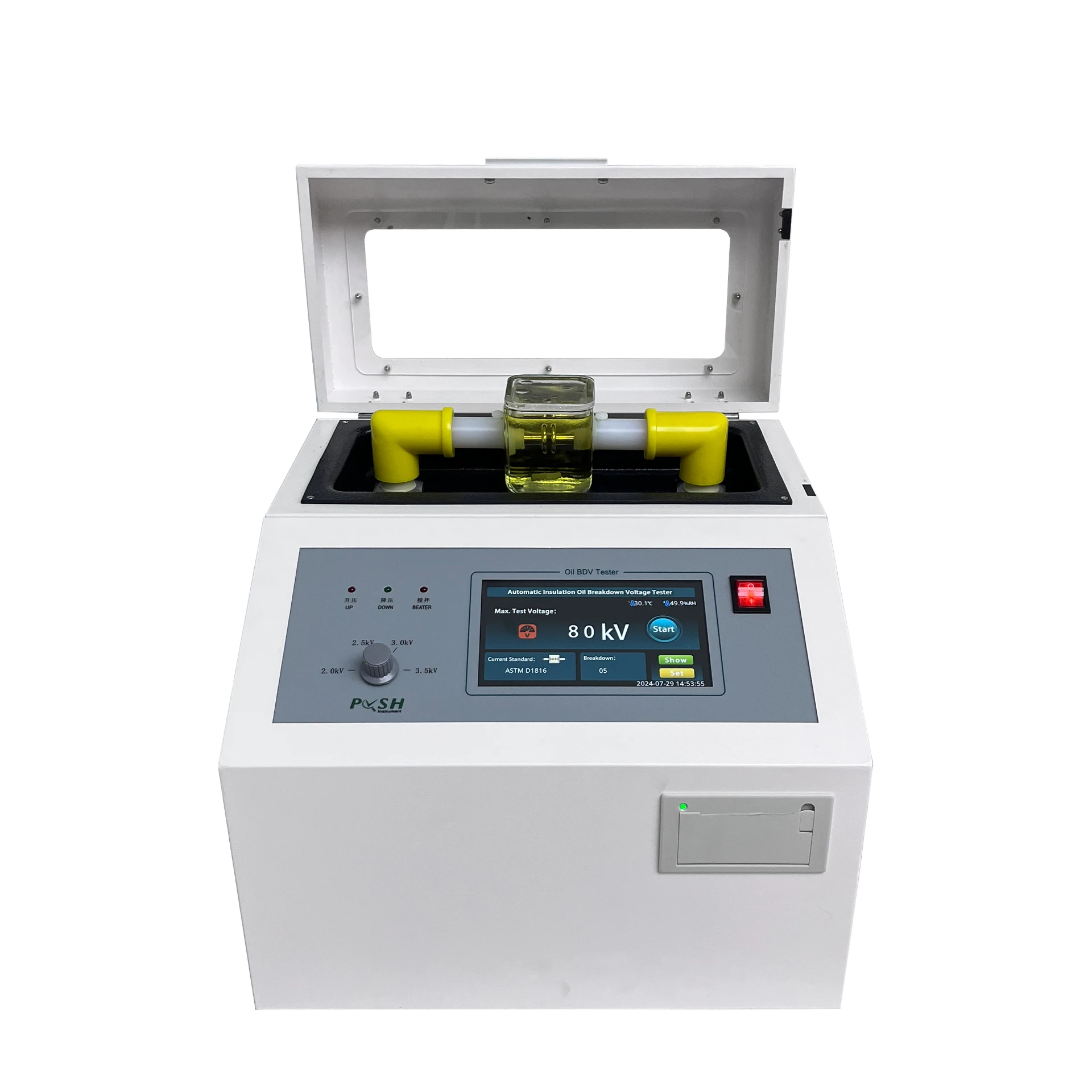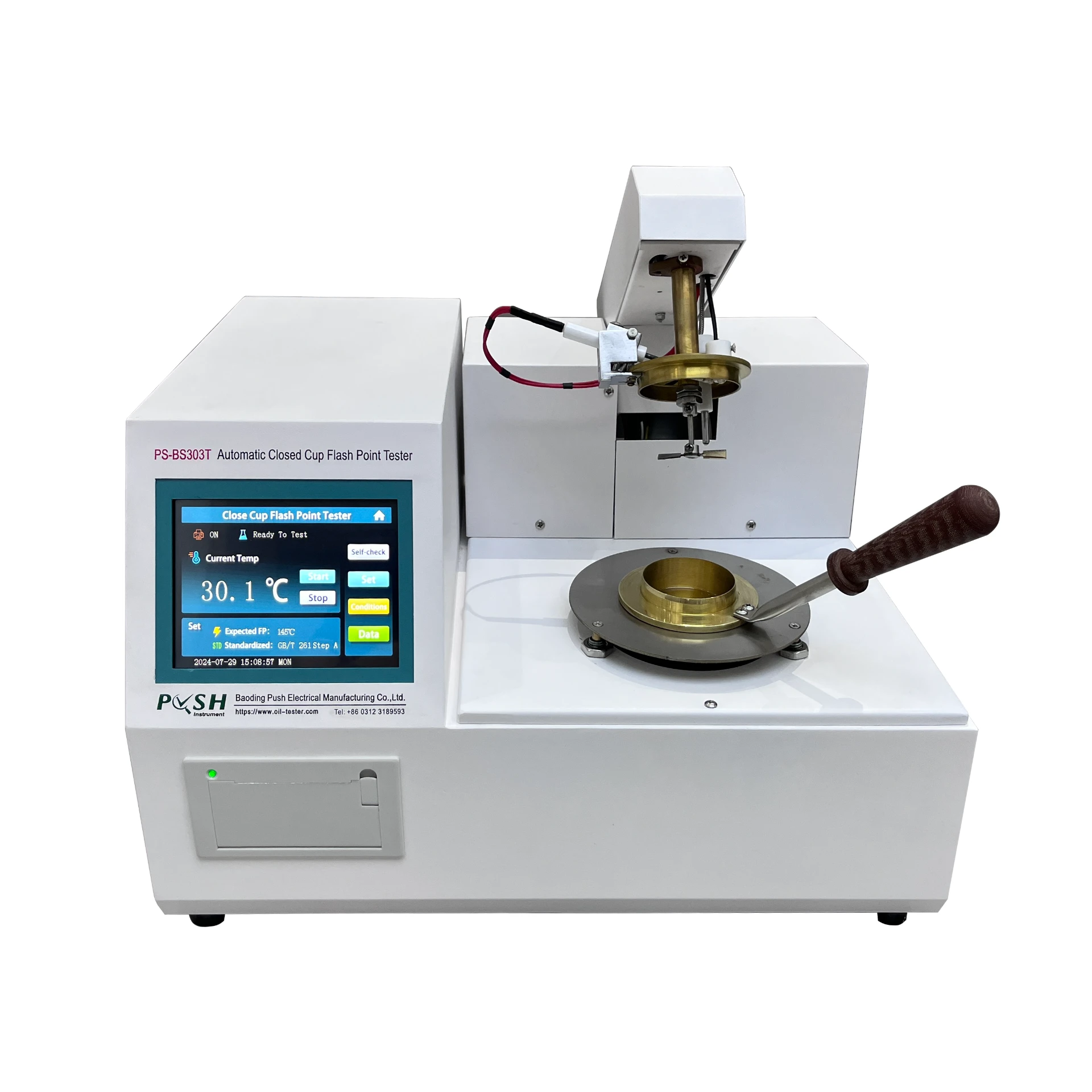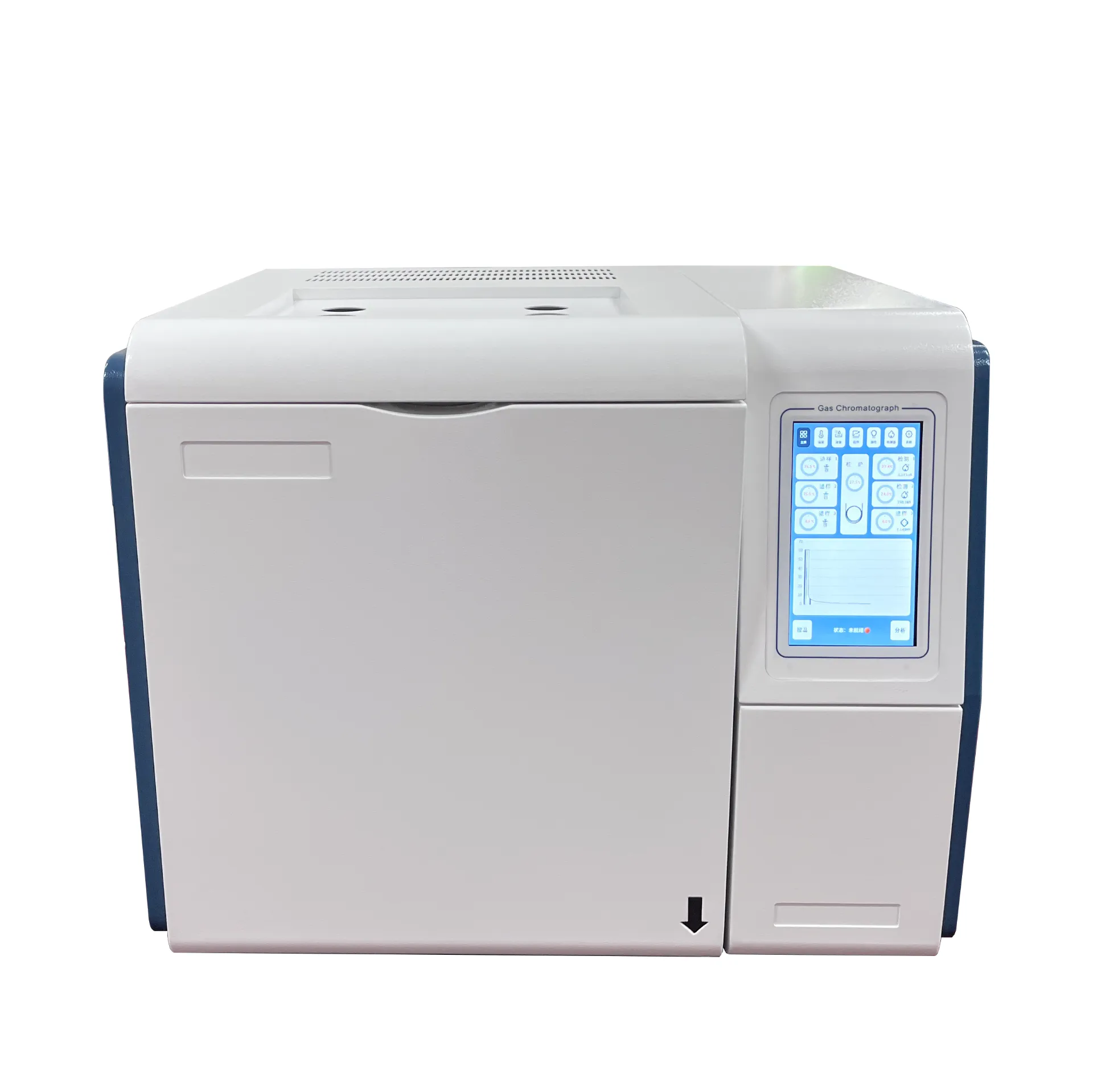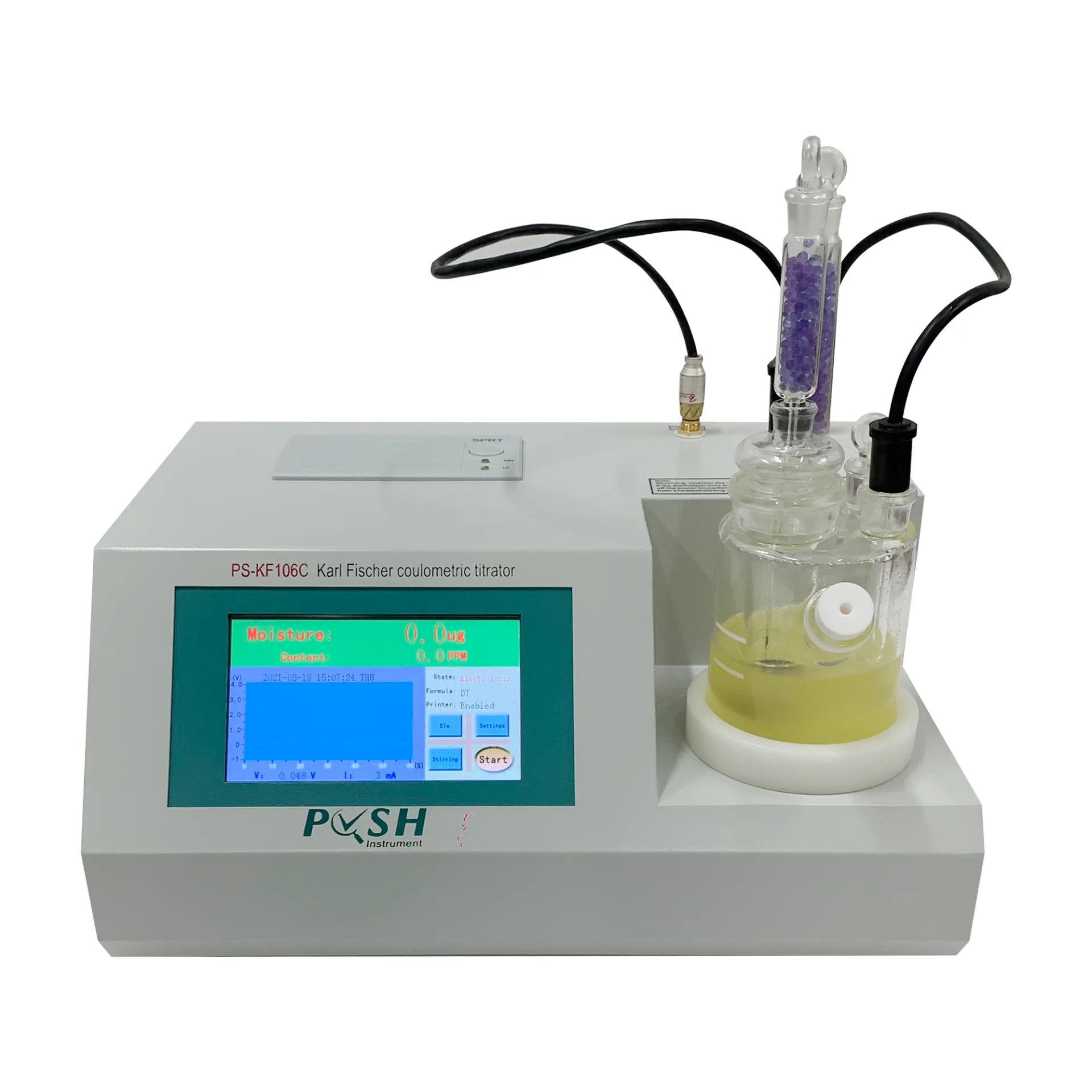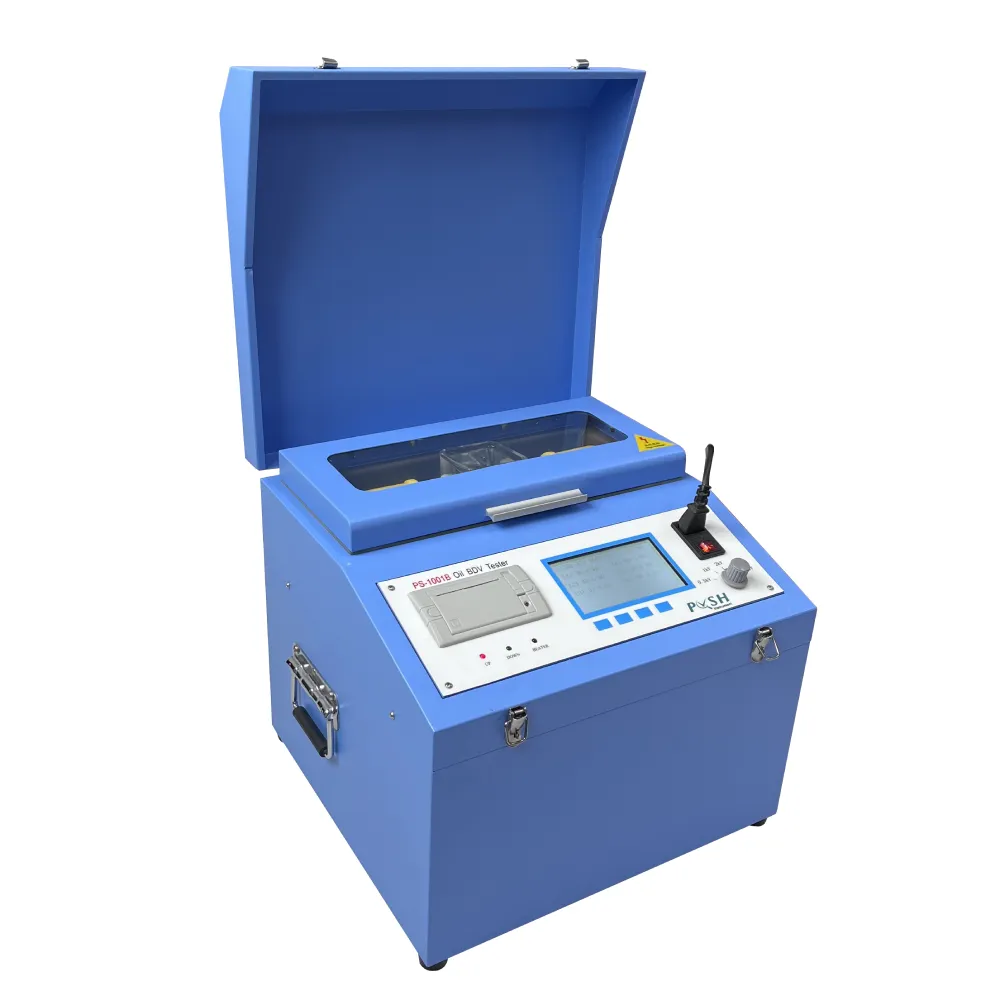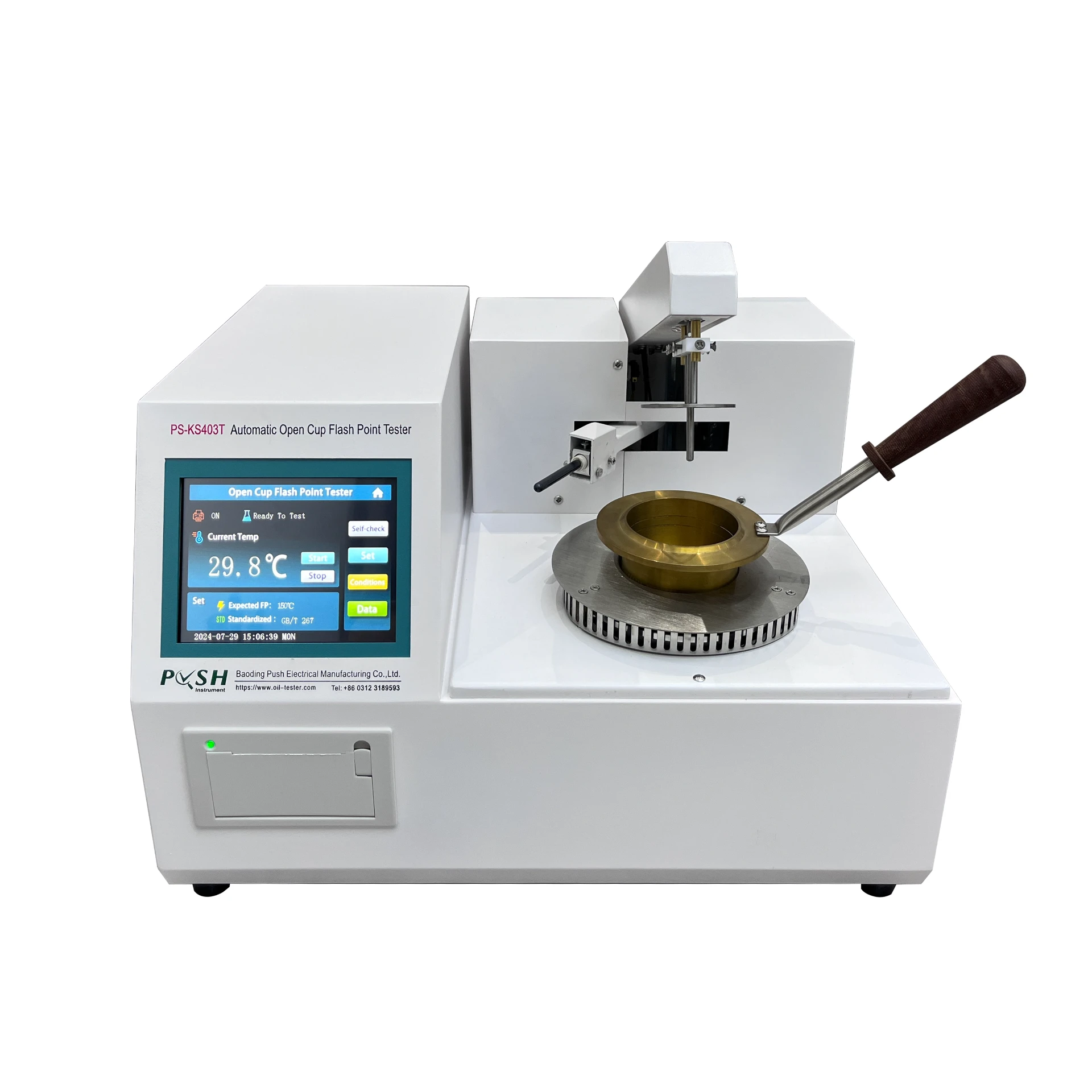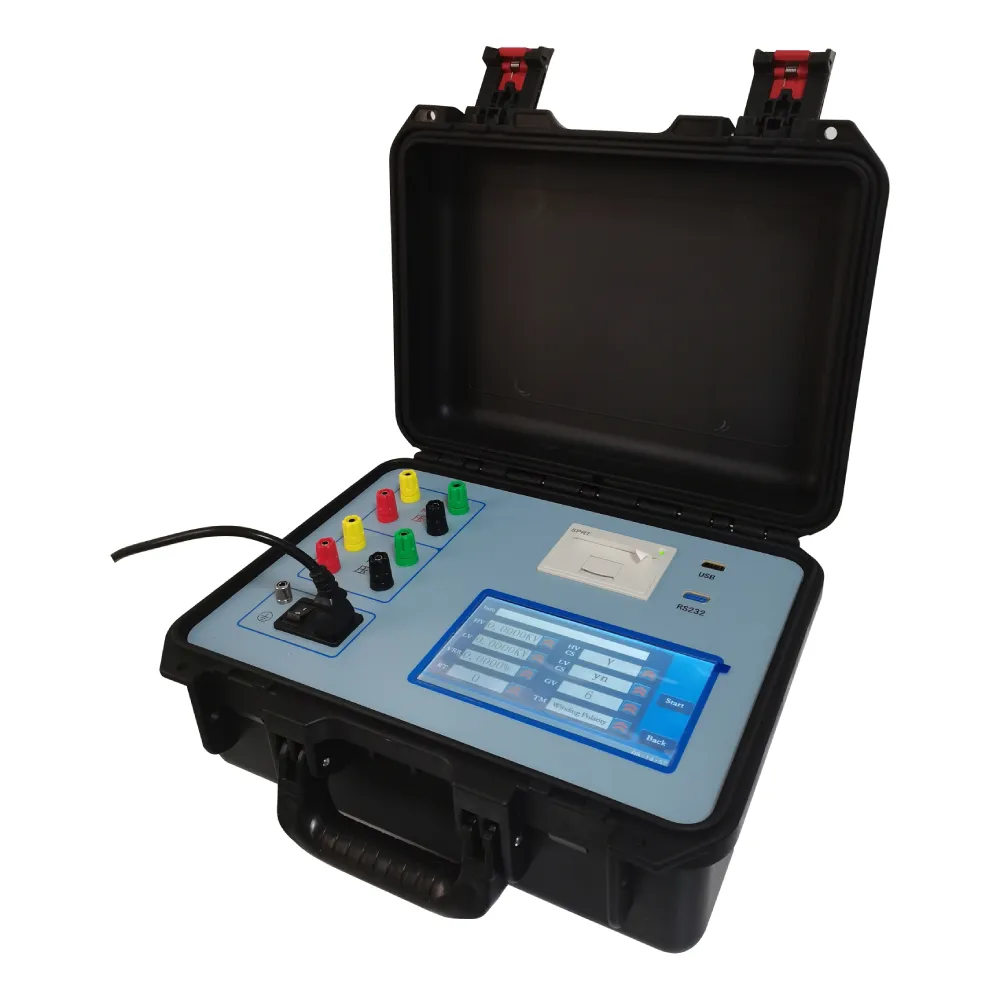 English
English


- 1, Wide variety of detector units
It can be equipped with a variety of detectors to meet the analysis needs of different fields. The leading injection port design is suitable for a variety of sampling methods, such as headspace sampling, thermal analysis sampling, etc., and is easily capable of analyzing various samples. - 2, Powerful detection of its extension function
The detector and its control components adopt a unitized combination design, and the extended control mode system is plug-and-play. - 3, Ultra-efficient rear door design
The intelligent rear door temperature control system ensures the stability of the column chamber temperature in any area, and the cooling speed is fast, which can realize the real near room temperature operation.
It has a powerful self-diagnosis function when starting up, intuitive display of fault information, power failure storage protection function, automatic screen saver and anti-power interference ability -
Technical Parameters
- Temperature control area: 8-way independent temperature control system, with automatic temperature protection function, independent small column oven heating area can be set
- Screen size: 7-inch industrial color LCD screen
- Language: Chinese/English two operating systems
- Column box, gasification chamber, detector temperature range: room temperature +5°C ~ 450°C
- Temperature setting accuracy: 0.1°C
- Maximum heating rate: 80°C/min
- Cooling speed: from 350°C to 50°C<5min
- Intelligent rear door: stepless adjustment of air volume in and out
- Program heating order: 16 order (expandable)
- The longest run time: 999.99min
- Injection mode: capillary column split/splitless injection (with diaphragm purge function), - packed column injection, valve injection, gas/liquid automatic sampling system, etc.
- Injection valve: It can be equipped with multiple automatic control valves for automatic sequence operation
- Number of detectors: 4
- Detector type: FID, TCD, ECD, FPD, NPD, PDHID, PED, etc.
Hydrogen Flame Detector (FID)
Minimum detection limit: ≤3.0*10-12g/s (n-hexadecane/isooctane)
Dynamic linear range: ≥107
With fire detection and automatic re-ignition function
Wide-range logarithmic amplifier circuit to improve the linear range -
Thermal Conductivity Detector (TCD)
Sensitivity: ≥10000mv.mL/mg (benzene/toluene)
Dynamic linear range: ≥105
Micro-cavity design, small dead volume, high sensitivity, with gas cut-off protection function -
Flame Photometric Detector (FPD)
Minimum detection limit: S≤2×10-11 g/s (methyl parathion)
P≤1×10-12 g/s (methyl parathion)
Dynamic linear range: S≥103; P≥104
The internal pipeline is fully passivated, and there is no cold spot for organic phosphorus -
Electron Capture Detector (ECD)
Minimum detection limit: ≤1.0×10-14g/ml (γ-666)
Dynamic linear range: ≥105
With air cut-off protection function, stable, safe and reliable -
Nitrogen Phosphorus Detector (NPD)
Minimum detection limit: N≤1.0×10-12 g/s (azobenzene)
P≤1.0×10-12 g/s (malathion)
Dynamic linear range: ≥103
-
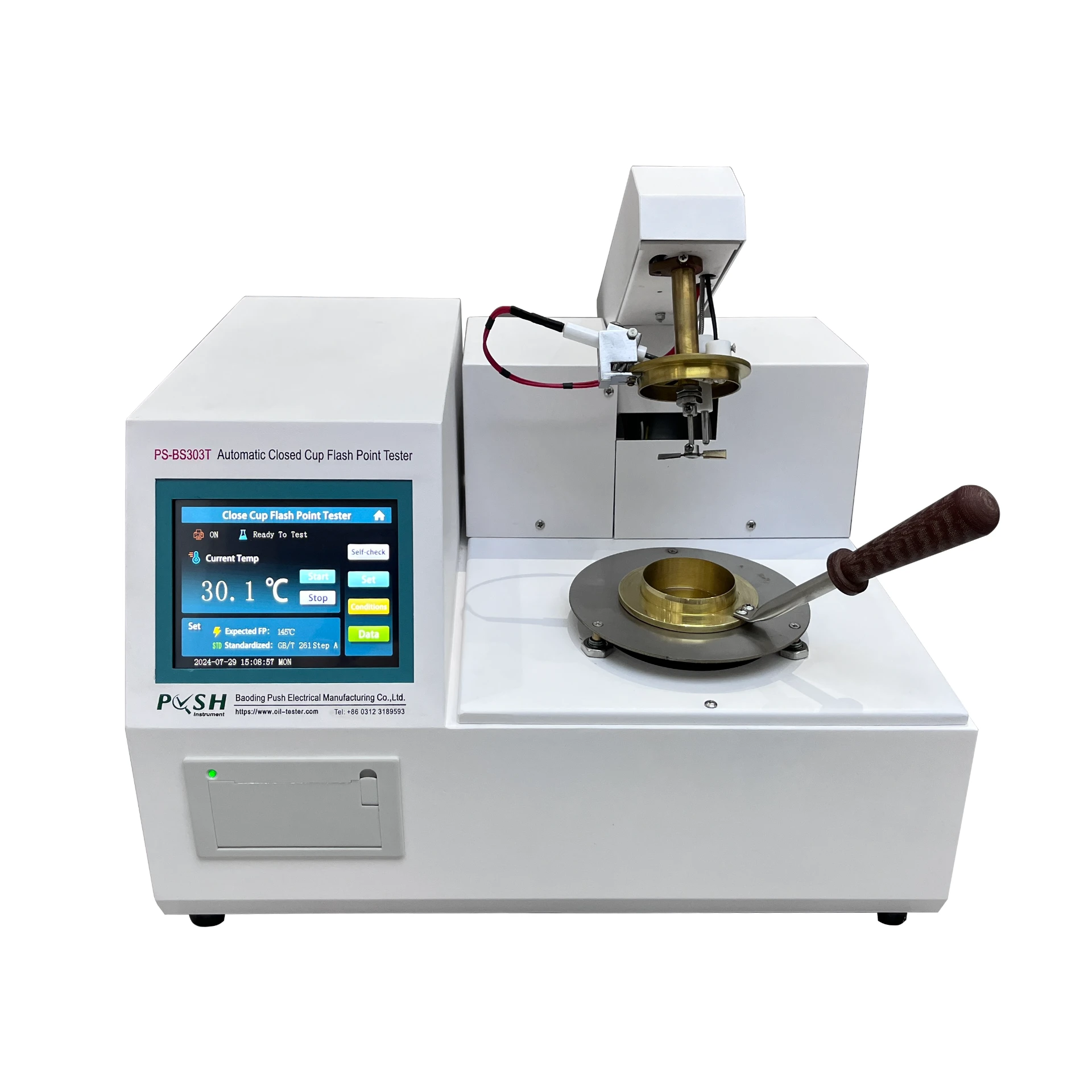 Differences between open cup flash point tester and closed cup flash point testerFlash point is the lowest temperature at which the test flame causes the sample vapor to ignite and the flame to spread to the surface of the liquid under the specified test conditions. The burning point is the temperature at which the sample is heated up and can burn continuously for at least 5 seconds on the basis of the flash point. The flash point and the burning point are used to indicate whether there are highly volatile or flammable substances in relatively non-volatile or flammable substances. They are one of the important parameters for the transportation, storage, operation and safety management of petroleum products.Detail
Differences between open cup flash point tester and closed cup flash point testerFlash point is the lowest temperature at which the test flame causes the sample vapor to ignite and the flame to spread to the surface of the liquid under the specified test conditions. The burning point is the temperature at which the sample is heated up and can burn continuously for at least 5 seconds on the basis of the flash point. The flash point and the burning point are used to indicate whether there are highly volatile or flammable substances in relatively non-volatile or flammable substances. They are one of the important parameters for the transportation, storage, operation and safety management of petroleum products.Detail -
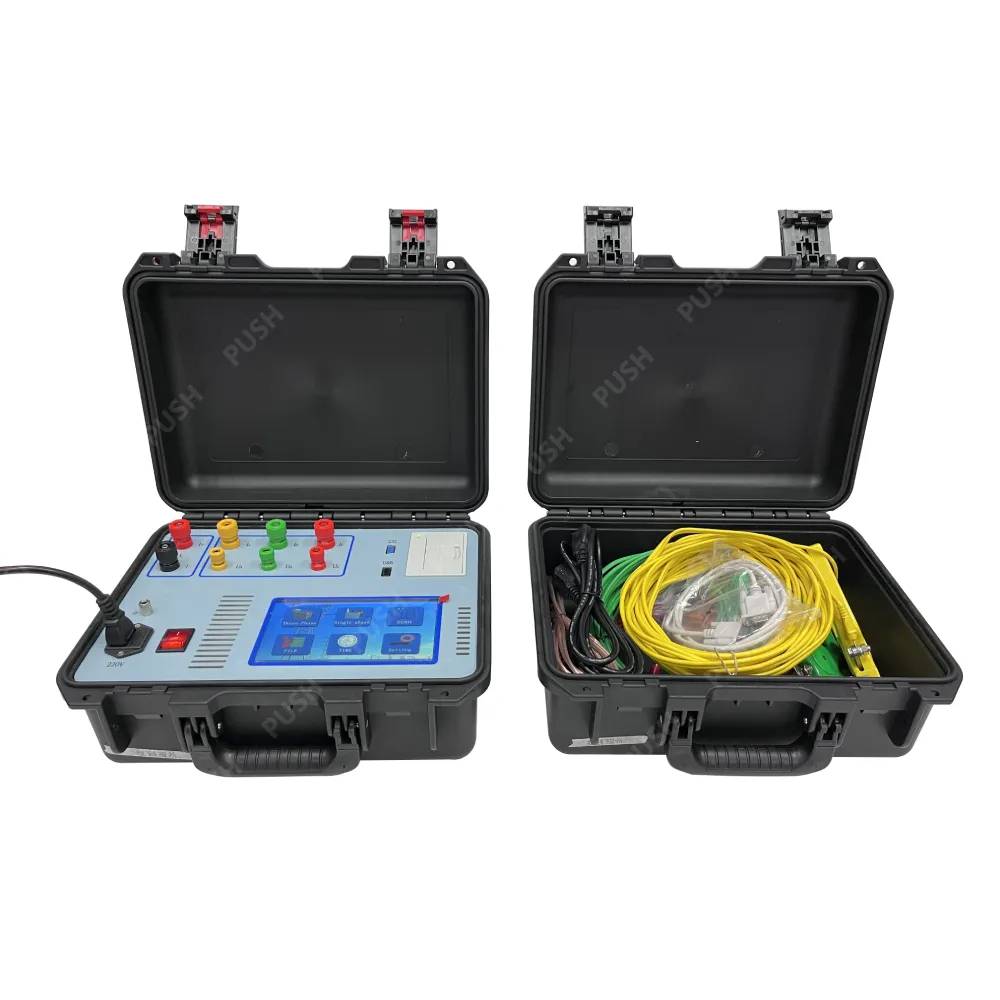 The Reliable Load Tap ChangerWhen it comes to enhancing the efficiency and performance of transformers, a load tap changer transformer is essential.Detail
The Reliable Load Tap ChangerWhen it comes to enhancing the efficiency and performance of transformers, a load tap changer transformer is essential.Detail -
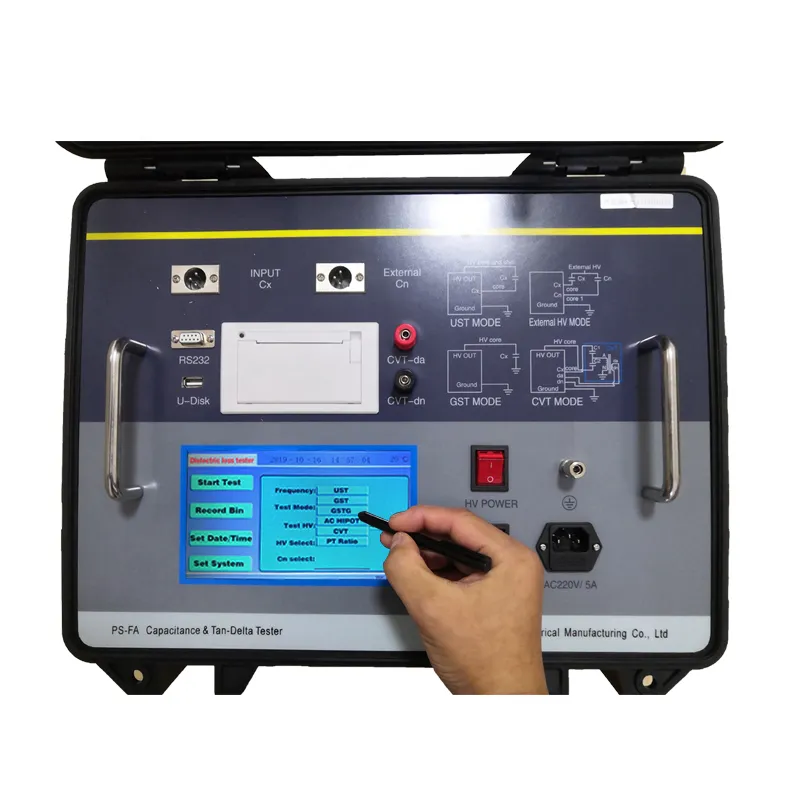 The Essential Guide to Hipot TestersWhen it comes to ensuring electrical safety and compliance, a reliable hipot tester is indispensable.Detail
The Essential Guide to Hipot TestersWhen it comes to ensuring electrical safety and compliance, a reliable hipot tester is indispensable.Detail


